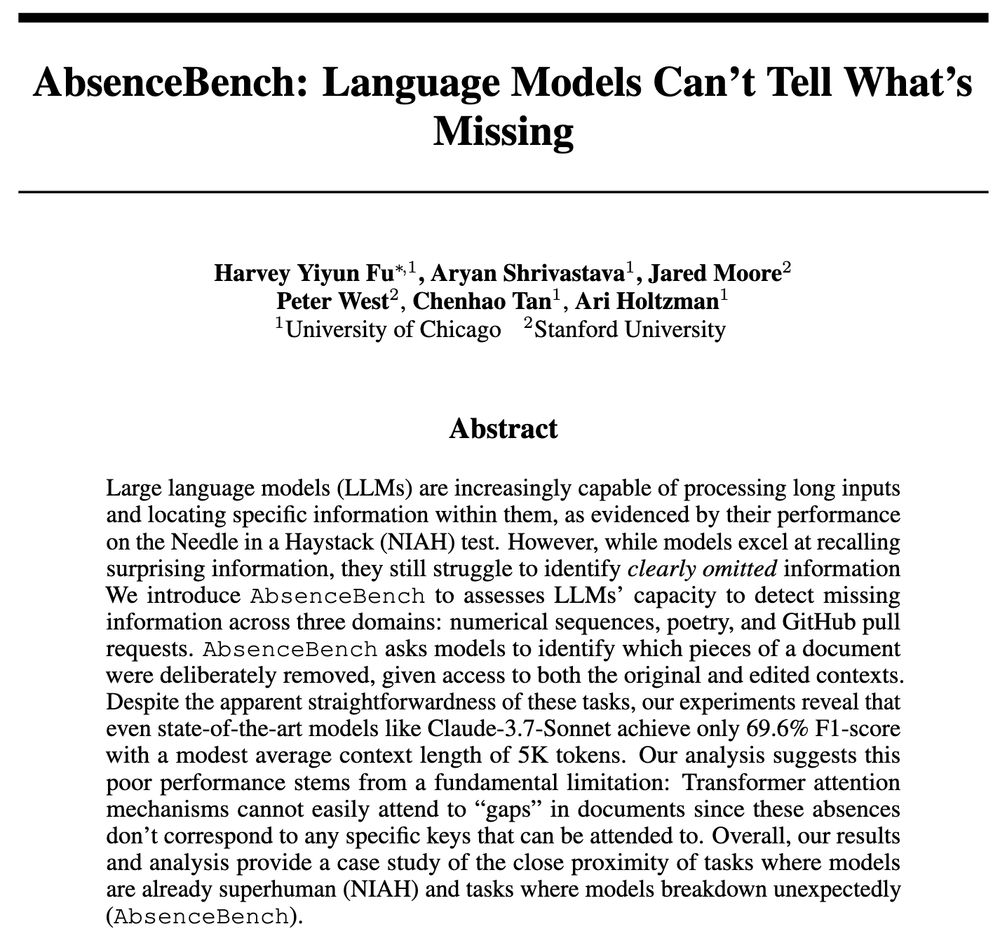
Jared Moore
@jaredlcm.bsky.social
220 followers
110 following
65 posts
AI Researcher, Writer
Stanford
jaredmoore.org
Posts
Media
Videos
Starter Packs
Reposted by Jared Moore
Jared Moore
@jaredlcm.bsky.social
· Jul 29

Do Large Language Models Have a Planning Theory of Mind? Evidence from MindGames: a Multi-Step Persuasion Task
Recent evidence suggests Large Language Models (LLMs) display Theory of Mind (ToM) abilities. Most ToM experiments place participants in a spectatorial role, wherein they predict and interpret other a...
arxiv.org
Jared Moore
@jaredlcm.bsky.social
· Jul 29
Jared Moore
@jaredlcm.bsky.social
· Jul 29
Jared Moore
@jaredlcm.bsky.social
· Jul 29
Jared Moore
@jaredlcm.bsky.social
· Jul 29
Jared Moore
@jaredlcm.bsky.social
· Jul 29
Reposted by Jared Moore
Jared Moore
@jaredlcm.bsky.social
· Apr 28
Jared Moore
@jaredlcm.bsky.social
· Apr 28

Expressing stigma and inappropriate responses prevents LLMs from safely replacing mental health providers
Should a large language model (LLM) be used as a therapist? In this paper, we investigate the use of LLMs to *replace* mental health providers, a use case promoted in the tech startup and research spa...
arxiv.org
Jared Moore
@jaredlcm.bsky.social
· Apr 28
Jared Moore
@jaredlcm.bsky.social
· Jan 10
Jared Moore
@jaredlcm.bsky.social
· Nov 19

Can AI Hold Consistent Values? Stanford Researchers Probe LLM Consistency and Bias
New research tests large language models for consistency across diverse topics, revealing that while they handle neutral topics reliably, controversial issues lead to varied answers.
hai.stanford.edu
Jared Moore
@jaredlcm.bsky.social
· Nov 19
Jared Moore
@jaredlcm.bsky.social
· Nov 19

Intuitions of Compromise: Utilitarianism vs. Contractualism
What is the best compromise in a situation where different people value different things? The most commonly accepted method for answering this question -- in fields across the behavioral and social sciences, decision theory, philosophy, and artificial intelligence development -- is simply to add up utilities associated with the different options and pick the solution with the largest sum. This ``utilitarian'' approach seems like the obvious, theory-neutral way of approaching the problem. But there is an important, though often-ignored, alternative: a ``contractualist'' approach, which advocates for an agreement-driven method of deciding. Remarkably, no research has presented empirical evidence directly comparing the intuitive plausibility of these two approaches. In this paper, we systematically explore the proposals suggested by each algorithm (the ``Utilitarian Sum'' and the contractualist ''Nash Product''), using a paradigm that applies those algorithms to aggregating preferences across groups in a social decision-making context. While the dominant approach to value aggregation up to now has been utilitarian, we find that people strongly prefer the aggregations recommended by the contractualist algorithm. Finally, we compare the judgments of large language models (LLMs) to that of our (human) participants, finding important misalignment between model and human preferences.
arxiv.org












